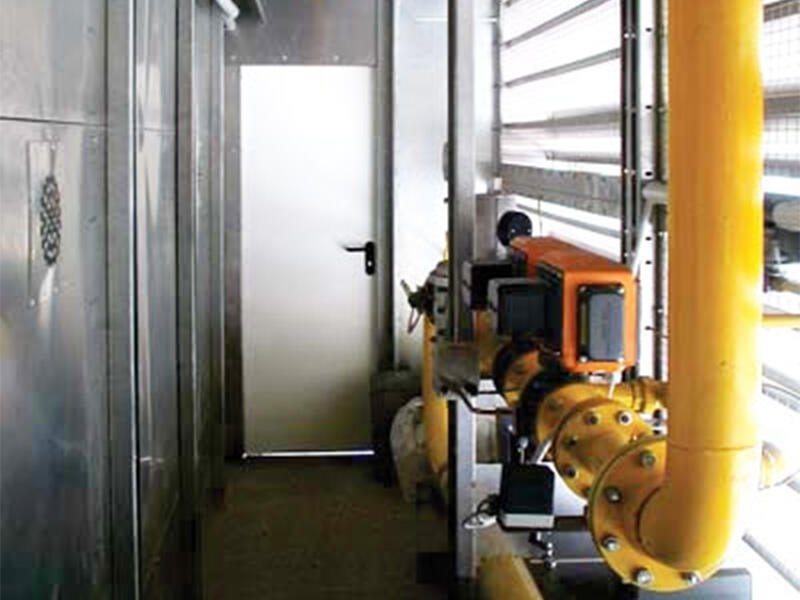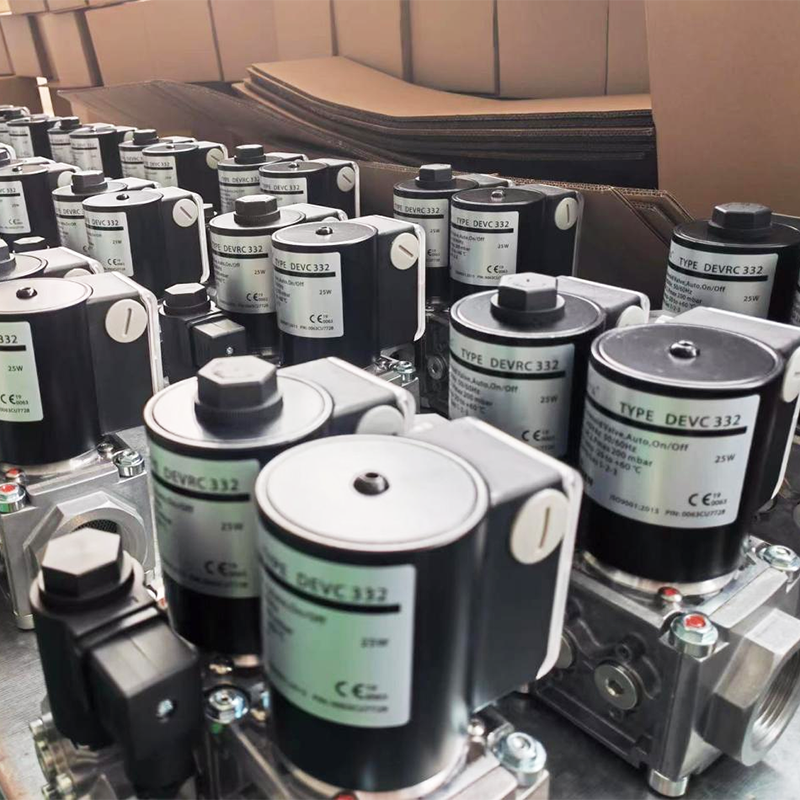Essential Gas Burner Safety Precautions
Proper Ventilation Requirements for Gas Burners
Good airflow matters a lot if we want to stop dangerous gases from building up around gas burners. When there's not enough fresh air circulating, stuff like nitrogen dioxide and carbon monoxide starts hanging around indoors. These gases aren't just unpleasant smells they actually cause major health issues, especially for people with asthma or other breathing troubles. That's why organizations like the National Fire Protection Association have created all sorts of rules about how homes and businesses should handle gas appliances safely. Most homeowners probably don't think much about these standards until they smell something odd coming from their stove or heater.
For optimal safety, implementing ventilation systems is crucial. Recommendations include:
- Installing exhaust fans capable of directing fumes outside the premises.
- Ensuring air intakes are placed strategically to allow a continuous flow of fresh air.
- Regularly inspecting and maintaining ventilation equipment to uphold system integrity.
These measures ensure that harmful emissions are adequately diluted and removed, safeguarding health and compliance with safety standards.
Routine Maintenance Checks for High Efficiency Oil Burners
Maintenance is essential for high efficiency oil burners to operate safely and efficiently. Key tasks such as replacing filters, cleaning nozzles, and regular system tune-ups are crucial to prevent malfunctions. Regular maintenance not only enhances reliability but also significantly improves energy efficiency by reducing unnecessary fuel consumption.
Statistically, well-maintained oil burners show a notable decrease in energy usage, which supports not only operational efficiency but environmental friendliness. Ensuring routine checks can drastically minimize risks of malfunctions and avoid costly repairs, signaling a direct improvement in overall system performance.
Leak Detection Methods for Furnace Oil Burners
Detecting leaks in furnace oil burners is paramount to preventing accidents. Various methods can be employed, including electronic sniffers that detect gas leaks swiftly and soap solution tests that visually illustrate leak locations. Immediate detection plays a crucial role in mitigating risks; therefore, routine testing is strongly advised.
Experts recommend regular inspections, at least biannually, using advanced techniques for thorough evaluation. Procedures like sniffing tests should be part of a larger safety protocol to safeguard against any potential hazards. Taking proactive measures not only enhances safety but ensures the longevity and optimal performance of the burners.
Health Risks of Gas Burner Emissions
Nitrogen Dioxide (NO2) Exposure and Respiratory Issues
Nitrogen dioxide, or NO2 for short, comes out of gas burners as they run and can really hurt our lungs over time. When natural gas burns at those super hot temps we see inside furnaces and stoves, it reacts with nitrogen in the air to create this harmful stuff. A bunch of research shows people living near lots of gas appliances tend to get sick more often with breathing problems. One study from the Journal of Environmental Health actually showed cities with higher NO2 readings had way more cases of asthma and similar issues among residents. Good airflow matters a lot here. Proper ventilation isn't just nice to have it's essential for keeping these dangerous gases from building up indoors. Homeowners should think about upgrading their ventilation systems if possible, since better airflow means cleaner air and healthier lungs for everyone in the house.
Long-Term Effects of Benzene Leaks in Commercial Settings
Commercial kitchens and industrial facilities often have benzene leaking from old or poorly maintained gas burners, which poses serious health problems over time. Workers in these environments face real dangers since benzene levels frequently go above what's considered safe for prolonged exposure. The IARC has officially labeled benzene as cancer causing, so keeping track of these emissions matters a lot. Most places need regular checks using proper gas detectors to keep things safe. When companies follow strict testing guidelines and fix any leaks promptly, they protect their staff from harmful exposure while staying compliant with workplace safety regulations.
Childhood Asthma Linked to Residential Gas Burner Use
More and more research points to a connection between gas burner emissions at home and higher rates of childhood asthma. The stuff coming out of those gas stoves and heaters can really mess with kids' lungs over time. One particular study from last year found that around 12.7 percent of all childhood asthma cases across America might actually be linked to using gas stoves regularly. Parents concerned about their kids' breathing problems should consider some basic safety measures first. Getting good airflow in the kitchen when cooking is essential, and avoiding long periods of gas appliance use in small rooms makes sense too. For families looking for longer term fixes, switching to electric cooktops completely removes the problem source. While the initial cost might seem high, many parents find it worth investing in their children's health in the long run.
Environmental Impact and Efficiency Considerations
Methane Emissions from Industrial Gas Burners
Gas burners used in industrial settings contribute heavily to greenhouse gases, especially methane emissions. Methane packs quite a punch when it comes to climate change effects compared to CO2, though its impact fades faster over time. Industrial operations release a lot of this powerful gas through their burner systems, making them responsible for a big chunk of total industrial emissions. Because of this problem, governments have started implementing rules targeting methane reduction from these sources. Environmental groups push hard for stricter controls on industrial emissions, often pointing to new detection technologies that help find and fix leaks before they become major issues. Some companies are already investing in better monitoring equipment as part of their sustainability efforts.
Improving Gas Burner Heat Exchanger Efficiency
Getting the most out of gas burner heat exchangers really matters when it comes to saving energy in industrial settings. New tech and better approaches are making big differences here. Take condensing heat exchangers for example they can actually increase thermal efficiency anywhere from 10 to 15 percent according to what we've seen in practice. Many different sectors across manufacturing have started adopting these improved systems and are seeing real money saved on their energy bills. One particular factory producing automotive parts saw their energy usage drop by around 20% once they upgraded their old heat exchangers. That kind of result shows why companies should seriously consider investing in better efficiency solutions for their operations.
Climate Consequences of Commercial Gas Burner Use
Relying so much on those commercial gas burners is really hurting our planet's climate and makes people think about greener options. When businesses keep using these gas burners, they end up leaving behind a big carbon footprint that just adds fuel to the fire of global warming. Switching over to something like solar panels or wind turbines actually works pretty well as an alternative. Companies that made the switch to cleaner tech have seen their carbon footprints shrink quite a bit, which means both good things for Mother Earth and their bottom line too. Take one business that went all in on renewables last year, their carbon emissions dropped by 30%, showing everyone else in the industry what's possible. We simply cannot ignore anymore how important it is to get serious about sustainable energy if we want any chance at stopping climate change from getting worse.
Safety Standards for Residential vs. Industrial Use
CPSC Guidelines for Home Gas Appliance Safety
The Consumer Product Safety Commission, or CPSC, has put together some pretty important rules to keep people safe when using gas appliances at home. For anyone living in a house or apartment with gas burners, knowing what to look for matters a lot. Regular checkups and maintenance work go a long way toward catching problems before they become serious issues like leaks or breakdowns. Many folks get tripped up by thinking that if there's no smell, everything must be okay. But here's the thing: not all dangerous gases have an odor we can detect. Some just sneak through without warning. Getting familiar with how gas burners actually work and what signs to watch for makes all the difference in staying safe around these appliances. Most accidents could be prevented with basic awareness and proper care over time.
OSHA Compliance in Industrial Gas Burner Installations
Following OSHA rules for gas burner installations matters a lot in factories and manufacturing plants where these systems are commonly used. The regulations set pretty strict standards about how these burners should be installed, maintained, and operated day to day. When companies ignore these rules, they're playing with fire literally and figuratively. Workers face greater danger, and businesses risk getting hit with big fines or even having their operations shut down completely. We've seen plenty of real world cases where faulty gas burner management led to serious workplace injuries. Looking at industry statistics shows a clear pattern too many facilities skip over basic safety checks, which explains why so many accidents happen in the first place. Smart companies know this isn't just about avoiding trouble it's about creating safer working conditions everyone can count on.
Ventilation Protocols for Commercial Kitchen Burners
Good ventilation is essential when running gas burners in commercial kitchens. Without proper airflow, harmful fumes build up and kitchen workers face serious breathing problems over time. Most homes just need simple exhaust fans, but restaurants and food service businesses require much more powerful systems that can handle all those greasy smells and smoke from constant cooking. Industry pros suggest going for those big industrial exhaust hoods and keeping them well maintained throughout the year. The difference between home and commercial ventilation standards shows how demanding restaurant kitchens really are. Top performers in the industry use specially designed high capacity systems built for heavy duty cooking conditions. Getting this right means safer working conditions and fewer health complaints down the line for everyone involved.
Table of Contents
-
Essential Gas Burner Safety Precautions
- Proper Ventilation Requirements for Gas Burners
- Routine Maintenance Checks for High Efficiency Oil Burners
- Leak Detection Methods for Furnace Oil Burners
- Health Risks of Gas Burner Emissions
- Nitrogen Dioxide (NO2) Exposure and Respiratory Issues
- Long-Term Effects of Benzene Leaks in Commercial Settings
- Childhood Asthma Linked to Residential Gas Burner Use
- Environmental Impact and Efficiency Considerations
- Methane Emissions from Industrial Gas Burners
- Improving Gas Burner Heat Exchanger Efficiency
- Safety Standards for Residential vs. Industrial Use
- CPSC Guidelines for Home Gas Appliance Safety
- OSHA Compliance in Industrial Gas Burner Installations
- Ventilation Protocols for Commercial Kitchen Burners



